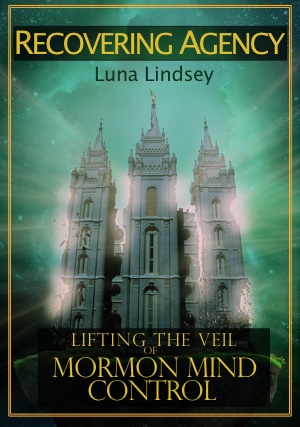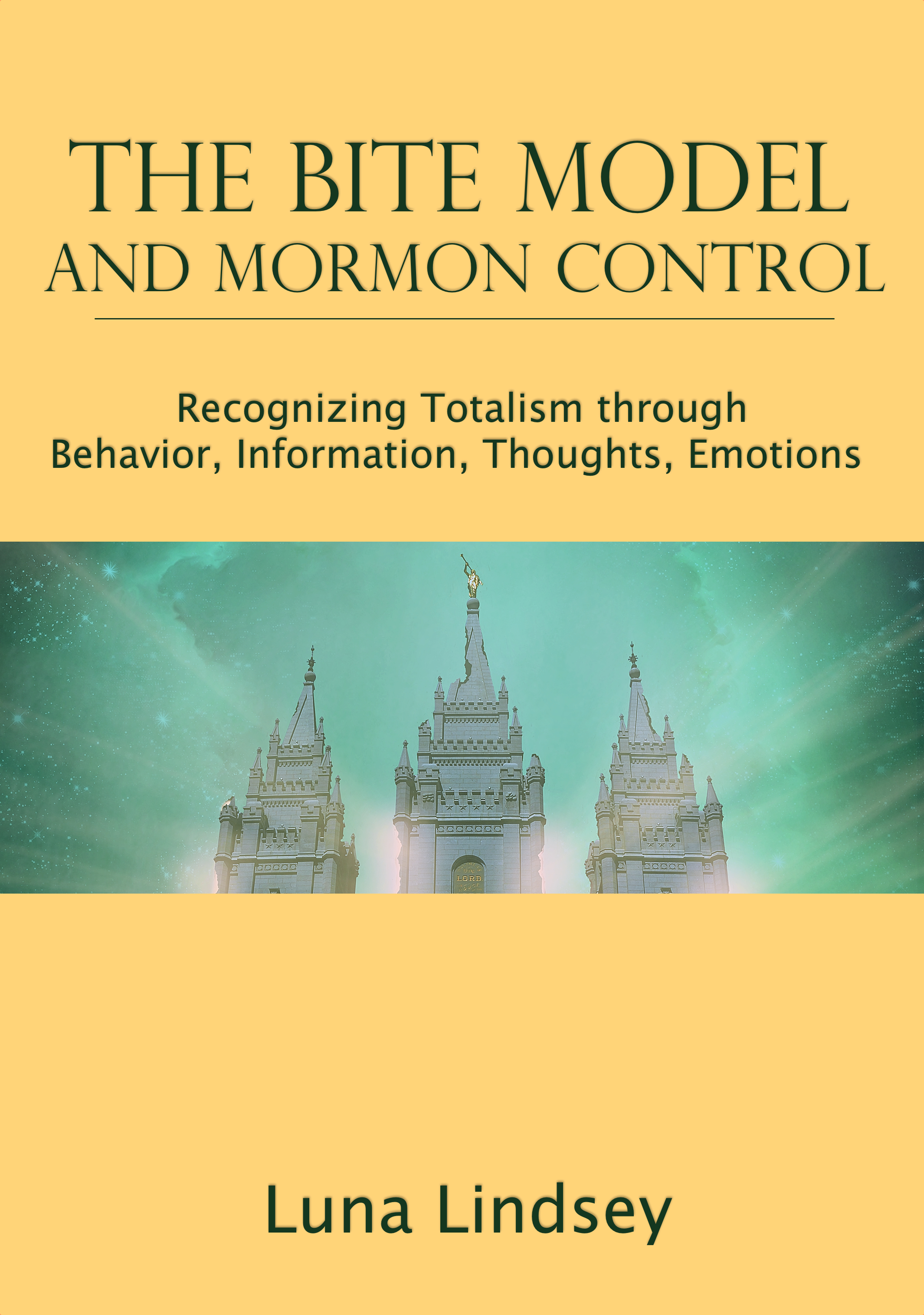Cognitive dissonance/consonance theory is basic to understanding human thought and behavior. It describes how our beliefs interact with each other, our resistance to new beliefs, and what dynamics are involved when we do change our beliefs. We experience cognitive dissonance and consonance on a day to day bases as we process all the new information in our mental “inbox”. It not only applies to our spiritual and political beliefs, but also what products we choose to purchase, how we raise our children, where we arrange our furniture, and all other decisions we make both large and small.
Cognitive dissonance is not, in and of itself, a thought reform method. But because it is so central to how we think and make decisions, it becomes key to understanding manipulative techniques.
A cognition is a belief, concept, behavior, memory, attitude, or emotion. Our minds are filled with millions of cognitions. Most of them have no relationship to each other and cannot be correlated — for instance, last years Super Bowl scores have nothing to do with worries over the rising price of gas. But many cognitions are connected, and of these, some will reaffirm each other (consonance) or conflict with one another (dissonance).
For example, knowing a statistic about the number of fatal car accidents would be consonant with a belief in using seat belts. Hearing a story about a child who died because he was wearing a seat belt would be dissonant, as would having a claustrophobic fear of being constrained.
According to theory, states of dissonance will leave us uncomfortable. Like thirst or hunger we will have an urge to bring a return to consonance. There are many ways to resolve dissonance: 1) Change your cognitions (beliefs, attitudes, behavior), 2) Add new cognitions to explain or balance the conflict, 3) Alter the importance of the cognitions.
1. Changing Cognitions
a. One way to decrease consonance is to change existing beliefs, attitudes, behaviors, or even memories. In the face of new facts, we may change our minds. Or in the face of social pressure, we may begin to favor something we had distaste for previously.
b. Or we can reject the new information. If it confronts our fast-held beliefs, we may be prone to believe the bearer of information (activist, author, speaker) is a liar, is a member of an opposing group, has ulterior motives, or is somehow against our principles. Sometimes it is easier to reject facts out of hand than it is to change our minds.
2. Add New Cognitions
a. We can add new concepts, ideas, or behaviors to explain or justify conflicts, to transform nonsense into sense. If we are a biblical inerrantist, we may be inclined to believe the parting of the Red Sea really happened. If this dissonates with the improbability that such a thing could happen in a scientific, rational world, then we may add the idea that the sea was parted by a strong wind, or that the Israelites actually crossed the shallow Reed Sea.
b. Behaviors are also cognitions, so in the face of dissonance we may exaggerate, increase, or add new behaviors which support our beliefs. A verbally abusive man may find his actions in conflict with his belief that he is a good person, so he may make a large donation to charity to relieve his guilt.
c. Alternately, we may find support in a group of friends who can help bolster our weakened beliefs. If we can surround ourselves with people of similar cognitions, this will create a loud consonance to drown out the dissonance.
3. Alter Importance
a. Lower the importance. When we can’t get what we want, it is often easier to say, “Fine, whatever, I didn’t really want it anyway.” By this change in attitude, we make the dissonant cognition less important than it once was. If we discover our favored candidate for President voted against our favorite congressional bill, we may dismiss the importance of that bill, even to the point of forgetting about it, to continue supporting the candidate — dissonance-free.
b. Increase the importance of consonant cognitions. This will drown out the discomfort of dissonance. We may still be disappointed about that bill, but we can instead focus on our candidate’s endearing charm and contributions to charity.
Dissonance resolution will usually take the path of least resistance. Changing, adding, or altering importance of cognitions may cause pain, loss, shame, disorientation, or fear. Which of these we choose will usually be that which causes the least discomfort.
Habits and the weight of other consonant cognitions also create resistance to change. If a habitual behavior goes against a belief, it may be hard to alter… unless the belief is deeply held and supported by a large number of other cognitions. One dissonance may threaten to topple thousands of dependent consonants, like a keystone or lynch pin. We’re not as likely to change a belief which would cause so much mental trouble, especially when it’s easier to reject the threat or add a few rationalizing beliefs.
Commonly people avoid dissonance by avoiding sources of new information all together.
Dissonance is not always resolved. Minor dissonances of low importance may continue for years. Or the addition of cognitions to justify conflicts can offer powerful damage control. Often people hold hundreds of conflicting views without ever realizing it. Orwell called this “double-think”, the ability to self-contradict without any apparent discomfort — “Freedom is Slavery”, “War is Peace”, “Ignorance is Strength”. It would be important to note that Orwell’s fictional characters in 1984 had been brainwashed into performing these feats of mental gymnastics.
Some cognitions can reverse the expected effects of new information. A cult may plant beliefs to counter potential opposition. For instance, if a person is being persecuted, they would normally be intimidated or humiliated into changing beliefs. But if members of a group hold a strong belief that Satan attacks truth, and seeks to lead believers astray through the ridicule of non-believers, persecution becomes a confirmation that will actually bolster faith. This technique of dissonance reversal is so powerful, people will even seek contradictory cognitions — in this example, people will perceive persecution where there is none.
Experiments
There are two famous experiments that show cognitive dissonance in action.
In the first, students were asked individually to perform a futile repetitious task for several hours. Upon finishing, each student was asked to explain their task to the next “student” (who was actually one of the researchers). They were instructed to introduce the task in positive terms; that it was fun, interesting, and exciting. One group of students was paid $1 to extol the virtues of the job, while another group was paid $20. A third group was not asked to talk to anyone for any price.
Afterward, all the students were asked to evaluate the experiment on how enjoyable it was. Those who were paid $1 to “market” the task said they enjoyed it much more than those who had been paid $20 or who had not been asked to talk to anyone.
There are three cognitions interacting in this experiment: 1) The enjoyability of the task, 2) The behavior of talking to another student about the task, 3) Justification through money.
Nearly everyone hated the task while performing it. Those who were not asked to lie to other students reflected this feeling on the follow-up survey. Similarly, the $20 group also stated they did not enjoy themselves. They could justify the act of lying — they were getting paid. Selling out is good enough justification to tell a white lie for the sake of research, right?
However, those who were paid $1 were in a bit of a bind. They had just lied for practically nothing. For them, the path of least resistance involved a slight modification to their cognition — to convince themselves they did indeed enjoy the task.
The second famous experiment/observation involved a particular form of cognitive dissonance: the belief-disconfirmation paradigm. In order to meet the criteria of this type of dissonance:
- The cognition(s) must be deeply held and related to action — the believer must act on his beliefs.
- There must be commitment on the part of the believer and actions which are irreversible. The more committed the action, the deeper the belief.
- The beliefs must be specific, detailed, and related to reality, i.e. falsifiable/disprovable.
- Irrefutable counter-evidence must be introduced and understood by the believer.
- The believer must have social ties to other believers. He cannot be isolated.
(When Prophecy Fails, p 4)
In the observed case, a UFO cult had predicted the end of the world on a specific date. Members of the group had made public statements, quit jobs or gotten fired, alienated relatives, moved, had no future plans for after the disaster date, and a few minor activities (like removing metal from their clothing). These believers had acted on their beliefs in irreversible ways. Their beliefs were specific and related to a real event. The date would come around, and the world would then know if they were right — or wrong.
Prior to the discomfirmation of their beliefs, this group had been primarily secretive, only allowing a few select members to join, or even to ask questions.
As the day of disaster grew nearer, several smaller predictions failed to materialize. These were rationalized away, but with each discomfirmation, the group became more public. When the UFOs failed to appear and the predicted flood failed to occur, the group determined (through prophecy) that the world had been saved because of their goodness and effort. Suddenly they became very public, inviting in reporters and visitors alike. They began to argue in earnest to convince others of their belief system, something they had not previously done. If they could convince others that they were correct, then they could feel that they were indeed right all along.
This belief-discomfirmation paradigm describes a type of cognitive dissonance that results in proselytizing. If others believe too, then you’re not really crazy after all. It is not unlike telling a joke where no one laughs, and feeling the urge to say, “Get it?!”
Most beliefs are not so concrete, so it is usually easiest to add a rationalizing cognition (as this group also did), to alter the importance of the belief, refute the new information, or change beliefs.
Fictional Mormon Case Studies
Lets take a look at a few stories in the Mormon context. These specific events did not occur, but these types of situations frequently happen to Mormons everywhere.
Sister Warren
Sister Warren is a perfect TBM wife to a Bishop and mother to six children. She was released as Relief Society President the previous year. While at the country fair, she sees an anti-Mormon booth. Thought she walks the other way, she can’t miss a large sign which reads, “Joseph Smith married a 14 year old girl!” She believes Joseph Smith is a beloved and righteous prophet, but she also believes it is sinful and vile for a grown man to marry a teenager — she has three teenage daughters of her own. This causes quite a lot of dissonance. Sister Warren immediately dismisses the anti-Mormons as hateful liars who are merely out to destroy the church. She changes cognitions — in this case, she labels the new information as a lie.
Brother Porter
Brother Porter is an Elder’s Quorum President. A few weeks ago, his wife came to him in distress about something she had read on the internet. At first he resisted, but he has now looked over the websites and learned a few things about Church history that trouble him. He had never heard these things taught in Church, and in fact on several points, the Church has published the opposite. Brother Porter can come to no other conclusion than that the Church has deceived him. After much troubling thought and heart-searching, he and his wife put in their resignations one year later. The Porters have changed cognitions.
Brother Pell
Brother Pell is a science teacher at a local college. He had been raised to believe in the literal Genesis account of creation. While at college, his Bishop — also his Biology teacher — had laid out all the evidence of evolution. Brother Pell quickly became convinced that life on earth had evolved. For a time, this dissonance threatened to crumble all his beliefs in Mormonism, on the assumption that evolutionism contradicted Genesis. But he quickly added a new set of beliefs — that God could well have used evolution to create life on earth. “Days” could mean “time periods”, and abbreviated language could explain the simplified description. Brother Pell added cognitions to resolve his dissonance.
Sister Brooks
Sister Brooks has been semi-active for several years, since her husband quit going to Church. Sometimes she takes her children to Church. She still reads the scriptures and still believes in the Gospel. One day a friend, Sister DuPont, calls her in tears. Sister DuPont has had frequent marital troubles, but for the most part has remained silent regarding details. Today she is forthcoming. Her husband has been beating her and her children for the last six months. The night before, Brother DuPont, a member of the bishopric, had given her youngest son a black eye. Sister DuPont had gone to the Bishop for help, but the Bishop believed Brother DuPont was a righteous man incapable of such actions, and that Sister DuPont was making up lies. When Sister DuPont complained that she had been repeatedly raped, the Bishop laughed and said no married woman could be raped by her husband. She needed to give her husband more Christlike love and understanding, and support him in his difficult calling.
At the other end of the line, Sister Brooks becomes confused, and at the end of the call quips, “I don’t think your husband would do such a thing!” and hangs up. Sister Brooks increases her activity, attending every meeting faithfully with her children. She tries to avoid Sister DuPont whenever possible.
Sister Brooks has added cognitions of behavior and social support by attending more meetings. The importance of her beliefs outweigh her friendship with Sister DuPont, so she has cut off association to eliminate the dissonant memory of the phone call.
Elder Roberts
Elder Roberts is on a mission. He went to gain a testimony after several years of teenage uncertainty. Through converting others to the Gospel, he has finally gained a firm knowledge the Church is true.
While proselytizing one day, an older man invites the missionaries in. The man has much to say on the topic of Mormonism. His methods are subtle, but he slowly introduces dissonance by talking about conflicts between the Bible and the Book of Mormon. As the contradictory scriptures mount, Elder Roberts begins to be daunted. When they leave, and his companion shrugs it off. “The Bible wasn’t translated correctly anyway, right? Those things don’t matter.” Elder Roberts begins to relax. “Besides,” says his companion, “The Lord will reveal everything in due time.” Elder Roberts smiles. With the help of his companion, he has reduced the importance of scriptural conflicts.
Conclusion – Cognitive Awareness
With an awareness of how cognition functions, one can choose beneficial beliefs that make use of the above information. For instance, I have chosen to make truth and reality an important foundation of my beliefs. I measure all other cognitions as to whether they match with what is real. I value making my words and actions reflect reality.
The effect of this belief is that I am less resistant to change and more open to learning. I am also more skeptical, less apt to accept new ideas without first researching the facts and opposing viewpoints. I want to know what really is truth, not what someone claims is truth.
If we can become aware of our cognitions and how they affect our behavior, we gain control of our lives. We can choose cognitions that benefit us, rather than automatically reacting to how we’ve been programmed.



